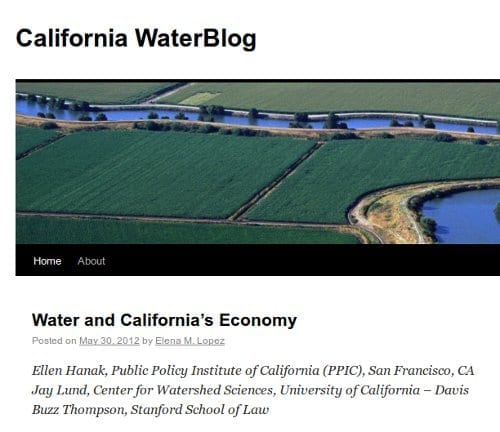What Does California’s Water Really Mean To The State’s Economy
The always wonky California Water Blog looks at California’s dependence on water — and its importance to the economy — in a recent post.
Those used to hearing about the catastrophic effects on the state’s economy of even slight water shortages will likely be surprised.
Water is indeed vital to the California economy, but not always in the ways one might think. Water is a scarce resource, subject to numerous and competing demands—including growing demands for environmental uses. And the state essentially stopped expanding its vast surface storage network several decades ago. Yet the economy has weathered several droughts, and enough water has been available to support a growing population and economy, thanks to management improvements, including water use efficiency, water markets, underground storage (or “banking”), and reuse of highly treated wastewater.
Another reason for resilience: California’s economic structure has been changing, making it less reliant on water-intensive activities. For instance, agriculture and related manufacturing of agricultural commodities account for nearly four-fifths of all business and residential water use — but make up just 2 percent of state GDP and 4 percent of all jobs.
Today, each unit of water now generates 4x more economic value than it did in 1967, and if you want to know why, visit the California Water Blog.





